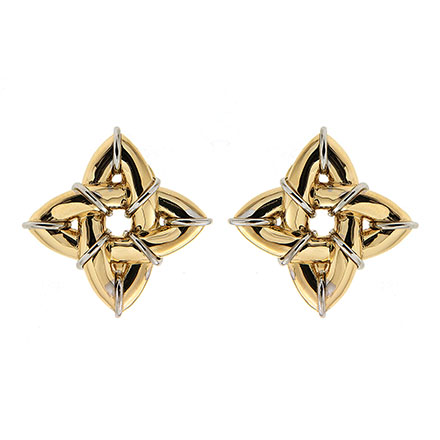When it comes to selecting a ring, diamonds command careful consideration. It’s also important to think of the metal that makes up the rest of the ring. Not only does it serve a practical component, keeping the diamond secure, it contributes to the ring’s aesthetics. A variety of metals are used for jewelry and rings, each with their own appeal.
 Noble metals are those which resist corrosion and other damage when in moist air. Materials that fall under this category include gold, silver, platinum and others used for making jewelry. While precious metals aren’t synonymous with noble, this aspect of durability is significant. No matter how rare or valuable the material, one that lasts is more appealing than one that’s fragile.
Noble metals are those which resist corrosion and other damage when in moist air. Materials that fall under this category include gold, silver, platinum and others used for making jewelry. While precious metals aren’t synonymous with noble, this aspect of durability is significant. No matter how rare or valuable the material, one that lasts is more appealing than one that’s fragile.
In their purest states, precious metals may still be shaped into jewelry. These pieces are quite soft, and may acquire dents and other damage, especially if worn daily like wedding bands. To promote durability, precious metals are alloyed with other materials for jewelry use. This sometimes becomes a decorative element, such as mixing gold with palladium to create white gold.
Silver is a whitish grey precious metal that’s been used for centuries. Before platinum rose in popularity, silver was favored for diamond settings, with its hues complementing the jewels. While silver is resistant to corrosion, it’s still prone to tarnishing, or discoloring, over time. Antique diamond bands set in silver may look less bright now than they did when they were first made.
The South American La Toilta people made platinum items between 600 BCE and 200 ACE. It took much longer for the Western world to discover how to utilize the metal. By the Edwardian period, platinum jewelry was sought after for its ability to hold delicate, lacy designs. It’s also favored for the way its hues coordinate with diamonds, as well as its resistance to tarnishing.
Gold has been admired for thousands of years, with artifacts dating as far back as 4400 BCE. It’s extremely malleable, allowing artisans to hammer, chase, stamp or otherwise shape the metal. Gold is also distinctive for its deep yellow color. Those who enjoy bold colors may want to consider gold wedding bands.
Colored gold is a type of alloy which both strengthens gold and alters its appearance. Depending on the materials used, it may turn white, reddish, green or other hues. Colored gold may be used by themselves for rings. Other designs combine two or three hues for a striking appearance. White gold engagement rings are good for those who like neutral tone, while rose gold may appeal to those who want a warm or retro look.





